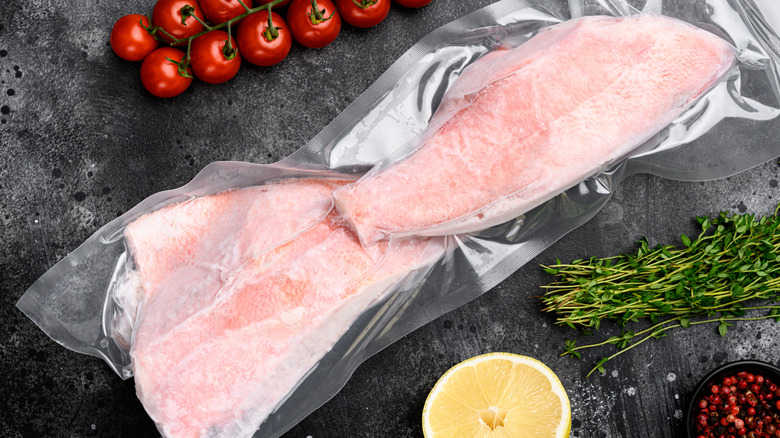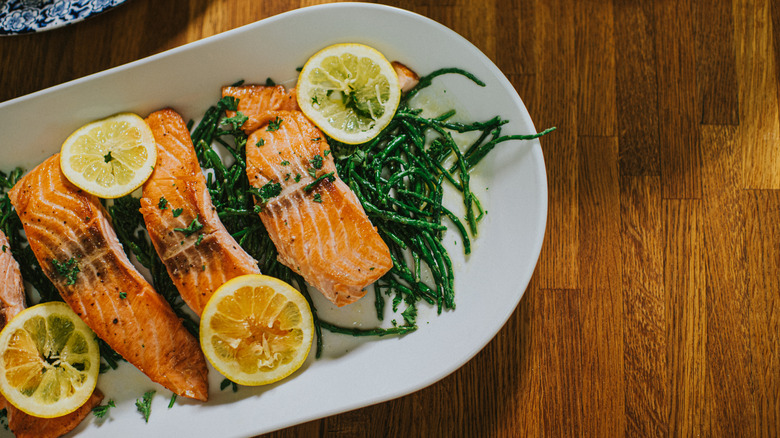Why Thawing Fish In Its Vacuum-Sealed Packaging Is A Potentially Deadly Mistake
With vacuum-sealed frozen fish, you don't have to go to the grocery store the next time you're craving a delicious seafood dinner. Instead, just pop open your freezer, take a filet out, and let it thaw for a few hours. But how you thaw that fish matters quite a bit more than you might think. While frozen fish is safe overall, there's a key point to remember when you're getting it ready to cook.
When thawing a cut of vacuum-sealed frozen fish, always open the packaging first. This may seem counterintuitive if you want to reduce foodborne illnesses, but it's important for preventing a potentially dangerous condition known as botulism. Fish can carry Clostridium botulinum, the bacteria responsible for producing botulism toxin (they can also be contaminated with listeria, another foodborne bacteria). The bacteria releases its toxin in warm, low-oxygen environments ... like thawing vacuum-sealed packages. Opening the package exposes the fish and possible botulism spores to oxygen, preventing the formation of the toxin.
Being careless with foodborne illness is one of the biggest mistakes you can make when cooking fish. Botulism in particular is not something to mess around with, especially if you're cooking for young children, seniors, or anyone with a compromised immune system. It's potentially fatal if left untreated, with symptoms that may include weakness, paralysis, and breathing problems. Worse, it first starts to show about 12 to 36 hours after you've eaten, so you may not realize anything's wrong until the next day ... or it could strike in the middle of the night.
How to prevent botulism toxin in fish
To keep yourself safe from botulism when cooking fish, store it in the freezer and keep it there until you're ready to cook it. Clostridium starts producing botulism toxin at temperatures above 38 degrees Fahrenheit, so as long as it stays frozen, you ought to be safe. When it's time to thaw, don't just poke a hole or two in the packaging and call it a day. Instead, fully take the fish out of the package and leave it open to the air to ensure sufficient oxygen exposure. Finally, don't try to cook your seafood straight from frozen. It's not dangerous, but the result is hardly appetizing.
One of the most important things to remember is that the bacteria isn't necessarily dangerous; instead, it's the toxin C. botulinum produces. While you can cook out the neurotoxin, it takes higher temperatures and more cooking time than what's needed to defeat the bacteria itself. When it comes to fish, especially salmon, overcooking is a big mistake for a good meal. By the time you kill the toxin, your dinner might be ruined.
A big part of what makes botulism toxin so dangerous is that it can't be seen, tasted, or smelled, which means that a contaminated cut of fish won't immediately appear off. If your fish looks like it's thawed at all (even if it's refrozen), err on the side of caution, throw it out, and maybe order pizza instead. Botulism toxin survives freezing, so it could already be contaminated.

